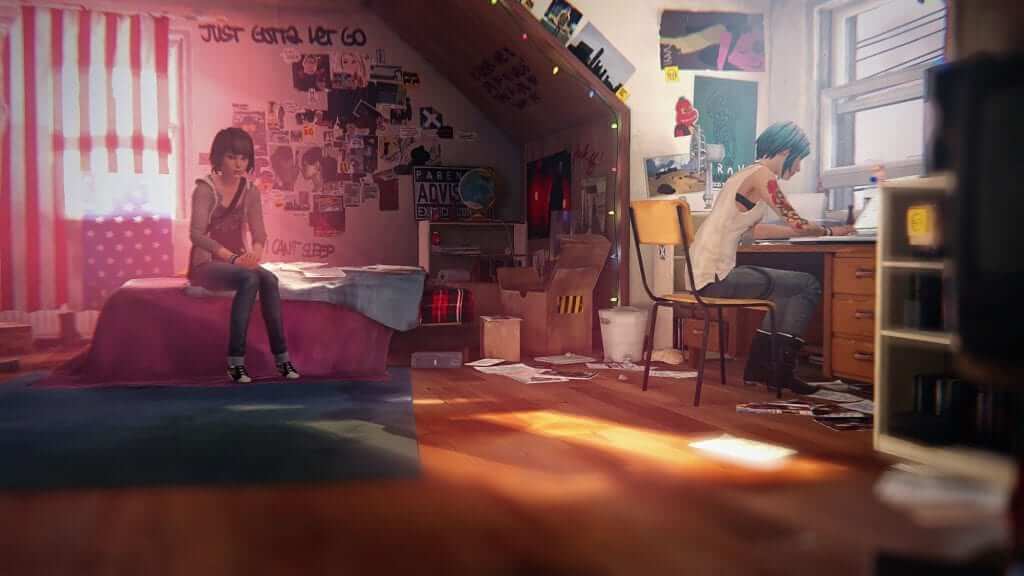Title: Life is Strange
Available On: PlayStation 4,
Platform Tested On: PC
Developer: Dontnod Entertainment
Publisher: Square Enix
Genre: Graphic adventure
Official Site: www.lifeisstrange.com
Release Date: January 29, 2015
Where To Buy: Xbox Store, PSN, Steam
Life is Strange is an episodic adventure game developed by Dontnod Entertainment and published by Square Enix, released periodically from January to October 2015. Available on

Within the first ten minutes of the game, we discover Max Caulfield’s secret ability: she can manipulate time and space at will. Naturally this evokes the concept of the butterfly effect, where every small decision—every choice that Max makes—has far greater consequences. After foreseeing an approaching storm that could destroy Arcadia Bay, Max must use her power to try and stop the impending natural disaster while simultaneously unraveling the mystery behind the disappearance of a Blackwell student named Rachel Amber. With aid from her reunited best friend, Chloe Price, the two begin to investigate Rachel’s vanishing using Chloe’s clues and Max’s time-traveling ability, but their synergy sinks them further and further into a sticky web of chilling secrets and imminent danger.
In this third-person graphic adventure, the player’s decisions partially compose the narrative of the game, though consequences primarily influence cutscenes and character interactions rather than upsetting the overall plot line. For instance, its multiple endings are triggered by your final decision rather than an accumulation of prior choices. Standard gameplay involves puzzle solving, fetch quests and conversation trees, and the series cleverly utilizes dialogue and back story as means of connecting with the characters to establish a more emotionally invested experience. Despite hilariously awkward attempts at high school vernacular and an abundance of campus clichés, supporting characters still somehow felt three-dimensional thanks to the time-traveling mechanics of the game. Conversation paths change every time you rewind, granting you access to more and more information about an individual and noting their reaction to certain dialogue choices, evolving them beyond their basic formula. Unsurprising for a plot that twists and turns, many are not what they appear to be.

The time-traveling capability in Life is Strange makes for a more inquisitive playthrough, as anything you say or do can be reversed if you so choose. Exploring the game’s different approaches to an interaction will leave you confident in your choices, never unsure of what might have been. However, for most gamers this will negate the need for multiple playthroughs, already having explored all of its avenues the first time around. Achievements revolve around snapping photos with Max’s polaroid camera as a way to experience her love of photography firsthand and explore the many details that populate each environment. While endeavors like this might normally feel tedious, the relaxing soundtrack is soft and tranquil, allowing you to leisurely explore the detail of a scene with calm surrender to the here and now.

Graphically, the five-part series is moody and expressive, with many instances of the depth of field, serene angles lit with sunlight or darkened with shadows and natural northwestern beauty that includes cedar forests and ocean sunsets. It all feels very photographic, fitting Max’s hobby just as much as her bittersweet view of the world. With a wonderfully emotive voice and a peaceful, believable disposition, Max is a refreshing protagonist—as meek and mousy leading females are uncommon in games—even if certain lines of dialogue meant to establish her geeky nature felt forced and oddly specific.
The running theme of sacrifice and friendship was honest and effortless, budding from your share of experiences with characters like Chloe Price and Kate Marsh—some happy, some sad and some downright disturbing. In spite of its flaws Life is Strange is still a good series, not afraid to take risks and unsettle its audience emotionally. For avid fans of adventure and mystery, this is a game not to be missed.
[embedyt] https://www.youtube.com/watch?v=yxAMR-1OtQ4[/embedyt]
- Gameplay: Heavily conversational and centers around gathering clues.
- Graphics: Beautiful scenery and photographic depth of field.
- Sound: Soft and peaceful with primarily acoustic instrumentation.
- Presentation: Suspenseful from the start and utilizes shocking cliffhangers to keep its audience hooked.
[review]







